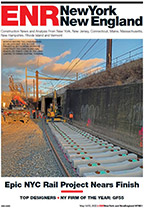When using synthetic slings, it is important follow the standard guidelines, such as adhering to stated ratings of the particular sling and to follow recommended rigging practices—for example, never shorten a sling with knots or drag a synthetic sling on the ground.
As with all slings, synthetic slings should be inspected regularly for wear and tear. Parnell says synthetic slings offer an advantage over wire-rope slings because they can be easier to inspect. They can be inspected visually and tactilely, and some forms of chemical or burn damage can be detected even by smell.
However, Parnell adds, a sling is only as good as its protection. That means it is important to choose the right type of sling protection and then use it correctly.
Appropriate Protection
Sling protection must be chosen for the load that is being lifted. Sharp edges, of course, must be protected by a cut- resistant material. Any sling must be protected from the possibility of a load shifting and generating friction that could cut or burn through a sling. In that respect, sling protection can be enhanced by protection devices that are designed to stay in place on a load, such as a pipe cut to fit onto an edge or flange of a load. The cut in the pipe serves to hold the pipe to the load while the round outer edge of the pipe prevents the sling from making a sling-weakening 90° angle.
Other types of sling protectors incorporate magnets embedded in a protective material so that the protector stays in place during the lift.
Parnell hesitated to recommend that OSHA regulations should be more prescriptive. Regulations can never encompass all possibilities, he said, and when regulations are too detailed, there is a tendency for operators to rely on them too blindly.
"It comes down to training," Parnell says. "Anyone using a sling needs to be trained."
This article was updated on July 14, 2015.


